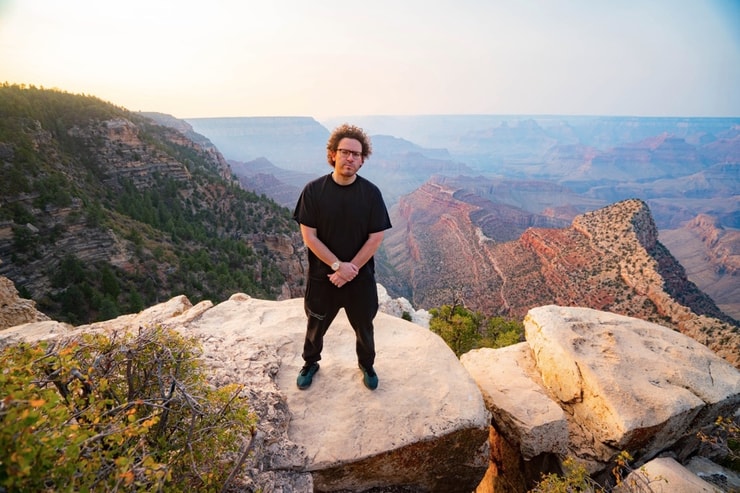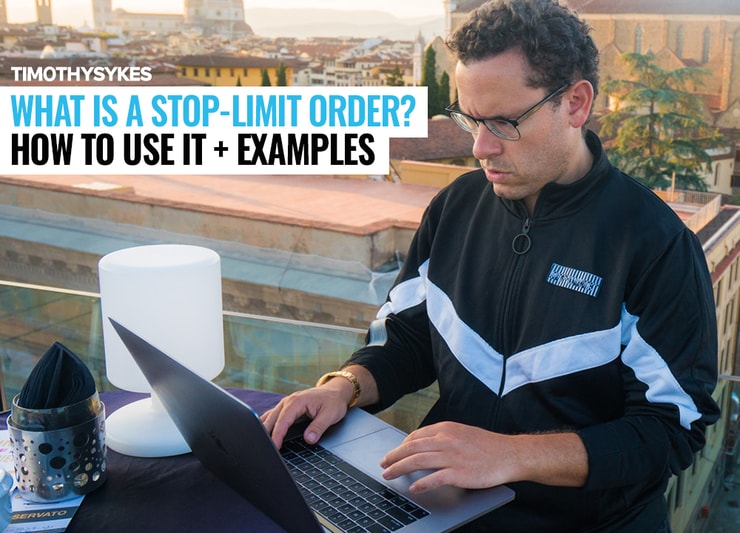Today, let’s talk about what a limit order is … and how you can use them in your trading.
Maybe you’ve been watching the market and you’re ready to place your first trade. Or maybe you’ve been trading for a while and never noticed the different order types.
Whenever you place an order in the stock market, you’ve gotta make several decisions. One decision is which order type you want to use in your trades. Your choices include market, limit, stop, stop-limit, or trailing stop.
With market orders, there are no guarantees on the actual price you’ll get on your order. If you want to guarantee a particular price, limit orders are a better bet.
Limit orders are an essential tool for traders. I use them, and here’s why I like them…
Table of Contents
What Is a Limit Order?

2026 Millionaire Media, LLCA limit order sets a cap on the price you’re willing to buy or sell a stock for. You can place the order at, above, or below the current price. Your order — if executed — will be at the limit price you set or better.
You can use limit orders for both entering and exiting a position. And you can even use it in conjunction with a stop order … but that can come with additional risks.
You need to know the right type of order to use for your trading style. It’s one way to help you reach your target profits and limit your losses. I think it’s nearly impossible to trade effectively without using limit orders.
No matter if you’re buying or selling, take the extra step and consider using a limit order to help ensure you get the price you want.
How Does a Limit Order Work?
Limit orders work in a couple of different ways. Thay can restrict the execution until the stock hits a certain price. Or it can provide assurances that when your order gets filled it will be at the price you want or better.
For example, say you want to buy a stock and you think it’s worth buying at $5 … but the stock currently trades at $5.25. You can place a limit order for $5, and your buy order will only be filled if the price goes to $5 or below.
What Is a Limit Order to Buy?
There are two potential ways you can use a limit order to buy: to open a long trade or close a short trade.
You can use a limit order to dip buy and open a position as we talked about above. You can also use one to ensure you don’t overpay. Say that stock is trading at $5.25, and that’s a price you’re willing to pay. You’d place a limit order for $5.25.
Your order will only get executed if you find a seller willing to sell at $5.25 or below. If, before your order gets to the market, the ask — which is the lowest price a seller is willing to take — moves to $5.30, your order won’t be filled.
You can also use a limit order to buy to close a short position. The limit price is the maximum you’ll pay to buy and cover a stock.
If you shorted a stock at $5 and it’s now priced at $4, you can use a limit order to close the position. Enter a limit order for $4 to buy. If the price moves back up to $4.05 before your order makes it to the market, your order won’t get filled. If, however, the price goes down to $3.95 when you send your order, then you’ll get filled at $3.95.
When using a limit order to buy — whether opening a long position or closing a short position — it’s always the maximum price you’ll pay. Everything below that price is fair game too since it would be in your favor.
What Is a Limit Order to Sell?
Limit orders to sell also have two functions: one on the long side and one on the short side. Limit orders to sell set a minimum price instead of a maximum price.
Earlier we had an example of a long position with a limit order for $5.25. Say the stock goes to $6, and you want to lock in profits. You’d place a limit order to sell for $6. If the price falls to $5.95, your order won’t get filled until the price comes back up to $6. If the price rises to $6.05 after you place the order, you’ll get filled at $6.05
Once again, the limit order will only execute at the price you set or better in your favor.
Shorts also open short positions with limit orders. If you want to open a short position in a stock at $4.50, you’d place a limit order at that price to sell short. If the price moved to $4.45, your order won’t be filled. But again, if the price moves to $4.55, your order would be filled, somewhere in the $4.50–$4.55 range.
When shorting a stock, you want the price to go down. So you want to sell at the highest price available. When you long a stock you want the stock to go up, so you want to buy at the lowest price available.
More Breaking News
- ASML Price Target Increased as AI Demand Fuels Growth
- LVRO’s European Expansion Boosts Stock Outlook Amid FreeNow Acquisition
- Futu Faces Challenges Amid Stock Price Fluctuations
- Downer EDI Secures Major Contracts, Expands Stock Buyback Plan
Limit Order vs. Market Order
There’s a distinct difference between a limit and a market order. A limit order sets a limit — a minimum or a maximum price at which your trade will get filled.
A market order simply takes whatever price is available. It’s important to know how pricing works in the stock market. When placing a market order, the bid and ask determine the price at which your trade gets executed.
Market orders can be risky, especially if you trade penny stocks like I do. I never use market orders. They’re way too risky for me.
Because the price of stocks can move so quickly, it’s better to use limit orders. This ensures you get in and out only at the price you set.
Limit Order vs. Stop Order
Limit orders set a minimum or maximum price for your trade execution. You can use stop orders to trigger another order.
That doesn’t mean a stop order always triggers a trade. Instead, it sends another order to the market once the stop criteria are met.
You can use stop orders to get out of a position or get into one. There are a lot of possibilities for using them. We won’t get into all of them. Today, we’ll address only using stop orders when going long on a stock.
Using Stop Orders When Going Long
To trigger buying a stock, you must place a stop order at least 1 cent above the current ask price. If the stop price hits that mark, that automatically triggers another order. The second order can be either a limit or market order. You can set limit orders at any price above or below the stop price.
For instance, if you’re trying to buy a breakout above $10, you want to wait until the stock actually goes above $10. You’d set a stop order at $10.01. Setting the limit order at $10.05 will increase your chances of getting your order filled while capping the price you’re willing to pay.
If using a stop order to buy, set a limit to protect yourself from overpaying. I don’t use market orders. Only you can decide whether or not they’re right for you.
Using a stop order to sell works the same way in reverse. You must place your stop order at least 1 cent below the current bid. If the stock hits that mark, it’ll trigger an order to sell.
Using a stop market order might mean your trade gets executed well below the stop price. Using a stop-limit sell order that’s too tight can result in no execution at all. Always manage your risk.
A smart practice if you’re just starting out is to place a stop-limit order with the limit 5–10 cents below your stop price.
I don’t use stop orders at all. Some traders do. Instead, I use mental stops. In other words, I know my risk level and place limit orders accordingly. It all comes down to what you’re comfortable with and what works with your trading plan.
Examples of Limit Orders
There are two main ways to use a buy limit order. The same concepts apply to any stock limit order.
The first example is when you want to buy a stock below its current price. For a stock trading at $2.25, you can place a limit order at $2.05 in hopes of buying the dip. If the price falls to that level, your order will get filled at $2.05.
The second way is for an instant fill but protecting yourself from overpaying. Say that the same stock is trading at $2.25, and you want it for that price. So you place a limit order to buy at $2.25. This order will likely be filled as soon as it reaches the market.
What if the price has the potential to move faster and you want to get an instant fill? You could place a buy limit order above the market price, around $2.26–$2.30. This can give you a better chance of an instant fill and help protect you from overpaying.
If the order isn’t filled, be sure to cancel it. Don’t trade it. Never chase a stock. Only buy when the price fits your plan.
How and When to Use Limit Orders
When entering a position, especially as a new trader, consider using a limit order every time.
The examples we just covered show how to use a limit order, but there’s a bit more to it.
Limit orders are typically “good ‘til canceled” (GTC). So if you place an order and it doesn’t get filled, you need to cancel the order. This is your real money on the line. Never leave a position or order unattended.
Once your limit order is filled, you need to closely watch your position to make sure it doesn’t go against you. If the position starts to go against you, follow rule #1 and cut your losses quickly!
Limit Order Strategies
My preferred strategy is to place a limit order on the ask. This gives me a better chance of getting my order executed right away at the best price.
If a stock is moving especially fast, I’ll even place my limit order a few cents above the current ask to give myself a better chance of getting my order filled.
One of the great things about trading penny stocks is that they can make huge moves. This means you don’t have to be exact to turn a profit. I never try to buy the bottom or sell the top. My goal is to take the meat of the move.
If I buy a few cents higher or sell a little too soon, I can still make a profit. There’s more to trading than using the right type of order. Check out some of my rules for trading active penny stocks.
Because many of these stocks move really fast, you want to control your entry with a limit order. Market orders can get filled 20 cents, 50 cents, or even $1 above or below the price you wanted.
Limit Order Advantages

2026 Millionaire Media, LLCLimit Your Risk
You set the level at which you’re willing to trade. The order executes when it hits your price. You only get in or out of a trade at your target price.
If the stock doesn’t hit your limit, your order won’t be filled.
Managing your risk/reward is an essential part of any trading plan.
If you’re new to trading and haven’t developed a trading plan yet, my trader checklist is a great resource that can help build a plan that fits your lifestyle and trading strategy.
Control Your Entry and Exit
By using limit orders, you can control your entries and exits. It’s one more way to ensure your trades are only filled at the price you want.
Market orders don’t come with that same protection. Prices in the stock market can move very fast. It takes time — even if it’s a few split seconds — to send your order from your computer to your brokerage. The price you see when you send the order can change by the time your order gets to the market.
This is why you need to trade smarter. Learn how to take advantage of all the tools available to you. One way you can limit your exposure to these wild market swings is by using limit orders.
Limit Order Risks

2026 Millionaire Media, LLCOrder Fills Aren’t Instant
If you place a limit order and the price moves away from your price, your order won’t get executed. And if you leave the order in place, it could get filled later when the stock is going completely against your plan.
If you place a limit order, pay attention. You need to know if it’s been filled. Leaving an order in place for several minutes, hours, or even days opens you up to unnecessary risk.
If your order doesn’t get filled, cancel it before you walk away. Don’t leave orders open and unattended. Manage your risk.
Don’t Chase Stocks
New traders make this mistake all the time. You must stay disciplined in situations like these.
Let’s say you see a stock move above $3 and you confirm it’s a breakout. You place a limit order at $3.05, but you’re too late … It’s already at $3.10. You place another order at $3.10…
But again, you’re TOO LATE. Now it’s at $3.25. This stock looks unstoppable — like it could even go to $10.
This kind of FOMO happens every day in the market, and it’s what drives a lot of supernovas.
You gotta stay disciplined. Walk away if your order doesn’t get filled. There will always be another stock. There will always be another trade.
What goes up must come down. Many times the crash is faster than the run-up. You need to be OK with not getting filled. Don’t let fear drive you into a bad trade.
Conclusion about Limit Orders
Limit orders are a simple way to keep your buying and selling at the prices you want.
If you want to find long-term consistency in the markets, you need to find discipline. Wait for those perfect setups. Take only the best trades. And execute them according to your plan.
Don’t ever chase a stock. Market orders can drive panicked buying. Don’t join the crowd! Learn how you can ride the panic momentum.
Place limit orders at smart entry points. That’s one way to help ensure you get a price that’s in line with your plan. Building a trading plan takes discipline and hard work. And honestly, not everyone has the dedication and work ethic to pull it off.
My challenge to myself is to help traders learn to think for themselves. It’s not easy. You’ve gotta work your butt off for it. You have to study, try, and fail to find what works. Over and over.
Think you have what it takes? Prove it. Apply for my Trading Challenge now.
I want to know what you think! Leave a comment below…











Leave a reply